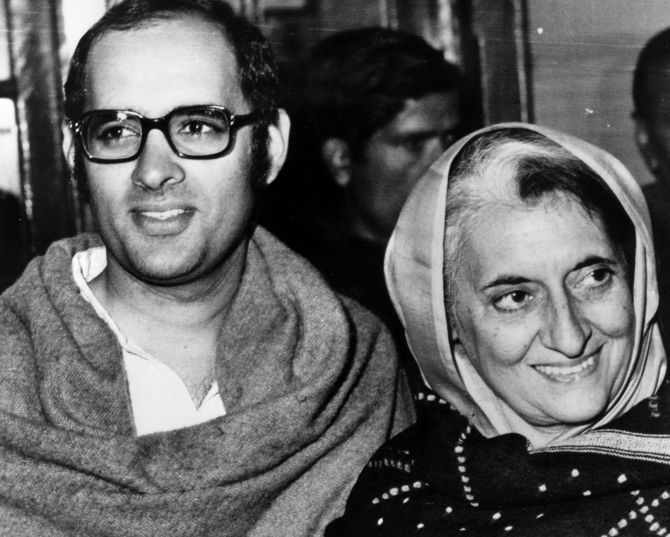On June 25, 1975, 40 years ago, began a period of Indian history that defeated the very purpose of our identity as the world’s largest democracy.
We have lost many men in wars and riots, but neither of them have threatened or curtailed our freedom the way the 21-month period of Emergency did.
Bharatiya Janata Party senior leader LK Advani raked up controversy in a recent interview when he said, “forces that can crush democracy are stronger now”. Whether that was meant to be a jab at Prime Minister Narendra Modi or simply Advani’s general frustration with his fading influence within the party, the comment did bring back some ugly memories from India’s post-independence history.
Without actually referring to Advani’s comments, Finance Minister Arun Jaitley later tried to clean up behind the senior leader by saying that it would be impossible for the world’s largest democracy to become ‘dictatorial’ in the present day. Let’s hope Jaitley is right. Let’s hope India doesn’t go through a period of fascist rule ever again.
On the 40th anniversary of the beginning of one of the darkest periods in our history, here are six painful facts about the Emergency.

1. Gagging the media
Freedom of the press was described by Pandit Jawaharlal Nehru as one of the “four pillars of democracy”. But free speech in every form was heavily curtailed during the Emergency. Within hours of the declaration of the President’s Rule on the night of June 25, 1975, electric supply to all major newspapers was cut off. But that was just the beginning.
Censorship was at its peak for the months to come and every publication, regional and national, was forced to praise the government and stay away from criticism.
While many mainstream newspapers like The Indian Express and several other underground publications continued to defy Indira Gandhi, the government took every possible step to make their life hell.
2. Crushing dissent

All of Indira Gandhi’s political opponents were arrested within hours of the declaration of the emergency. The crackdown on protests and other forms of dissent continued during the following days.
Every single voice from the opposition was crushed brutally as leaders like Jayprakash Narayan, George Fernandes, Morarji Desai, Nanaji Deshmukh, Subramanian Swamy, Atal Bihari Vajpayee, LK Advani, Ramakrishna Hegde, HD Deve Gowda, M Karunanidhi, JB Patnaik, Jyoti Basu, Madhu Dandavate, Lalu Prasad Yadav, Mulayam Singh Yadav, Sharad Yadav and many others were jailed, and parties like the Rashtriya Swayamsevak Sangh were banned soon afterwards.
3. Forced sterilisation
One of the ugliest memories from the Emergency was the mandatory birth control carried out by the ruling party under the leadership of Indira Gandhi’s younger son, Sanjay Gandhi. Government officials and bureaucrats were given ‘targets’ i.e. the number of men they were supposed to convince into getting a vasectomy, in order to control population.
While the government throughout maintained that the sterilisation was a voluntary programme, many reports claim that this policy was blatantly misused by the officials as several Indians were coerced into getting sterilized. Furthermore, there are many reports on the use of sterilisation as a tool to threaten opposition leaders.
4. Absolute power
The emergency literally gave Indira Gandhi absolute political power and control over every major administrative move. With the parliamentary majority to back her, the then prime minister’s inner circles systematically carried out extensive changes to the constitution, dissolved state governments that were ruled by opponents and detained thousands under the guise of ‘national security’ without giving them a fair trial.
5. Torture, suppression and crackdown on civil liberties
The blatant abuse of power by the then PM gave her supporters within and outside the government excessive power to crack down on every dissenting voice. The government’s grip on the channels of information was so tight that countless incidents of suppression went unreported.
The families of arrested leaders and protesters were often driven out of their homes, questioned and tortured without charges. Any association with the opposition meant that a constant threat of arrest and exploitation loomed over every innocent citizen.
6. Efforts to control the judiciary
At the root of the Emergency was the Allahabad high court verdict against Indira Gandhi, in which the PM was found guilty of misusing government machinery for her political campaign and going against election protocol. As the Supreme Court upheld the decision, Indira Gandhi made every effort to influence the judiciary in her favour. During the period of Emergency, the government passed multiple amendments and passed several ordinances and decrees in order to consolidate its power.
“The most important changes were designed to strengthen the executive at the cost of the judiciary, and thus disturb the carefully crafted system of Constitutional checks and balance between the three organs of the government,” wrote historian Bipin Chandra in his book JP Movement and the Emergency.
Also read: 10 assassinations that shook the world
Conspiracy Theories: What really happened to Netaji Subhas Chandra Bose?












 © 2025
© 2025